Influencer marketing is all the rage. But one way to improve your content marketing effectiveness is to do more than treat influencers as spokespersons — it’s to collaborate with them on creating content.
If you’re reading this post hoping to figure out how to get Kim Kardashian to mention your brand on Instagram, that’s fine. And more power to you if you can pull that off.
However, I think you’ll find that the “spokesperson” approach isn’t as effective as the collaborative content approach illustrated in the ten methods I’m about to share with you — particularly when you’re a smaller marketing department without a big-time budget.
What is influencer marketing (and why is it starting to backfire)?
Influencer marketing, to be effective, involves an influencer (a person with a considerable following online or off) to either overtly or subtly endorse your product.
However, the most effective influencer marketing occurs early in the Customer Journey.
If the boldface didn’t get your attention, I’ll reiterate: The influencer marketing that works, and is working, occurs early in the Customer Journey. The sweet spot is at the problem awareness stage, not at the buying stage. Later, I’ll share a perfect example of how this worked for a client.
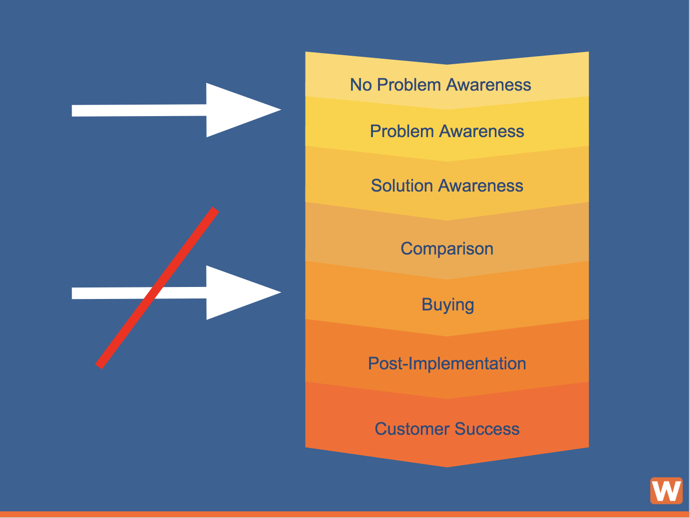
When to use influencers in Customer Journey.
Don’t believe me? Ask Oprah.
The perils of treating influencers like spokespeople in digital marketing was detailed in this brilliant post by Hal Conick from the AMA.
Microsoft hired a bunch of influencers to endorse their products as part of a $1.5 billion ad blitz in 2012. Naturally, they turned to Oprah, and she responded with the following tweet.
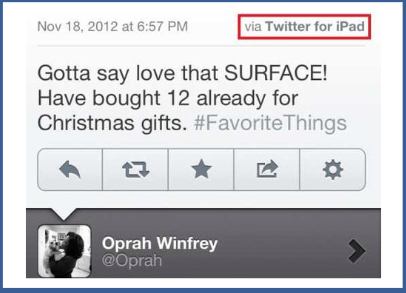
The problem? The tweet was sent via an iPad, which is an Apple product and direct competitor to Microsoft. D-oh.
Therein the problem lies. We’re used to celebrity spokespeople “selling out” on TV commercials to hawk products. Heck, it’s almost expected, and sometimes it’s actually fun to see your favorite celeb walking and talking among mere mortals.
It’s different with social media, however.
Authenticity is lost on social media
Marketers ruin everything. Give us a wilderness, we’ll put up a billboard in front of it. Put out a children’s TV show, and we’ll pollute it with ads for sugary bubble gum. Give us Facebook and, well, you know the rest.
The issue with us going Don Draper on the digital world is that the consumer is also a content producer. They can call foul on a campaign like Microsoft’s, and they can fire back. Then things get real smelly, real fast.
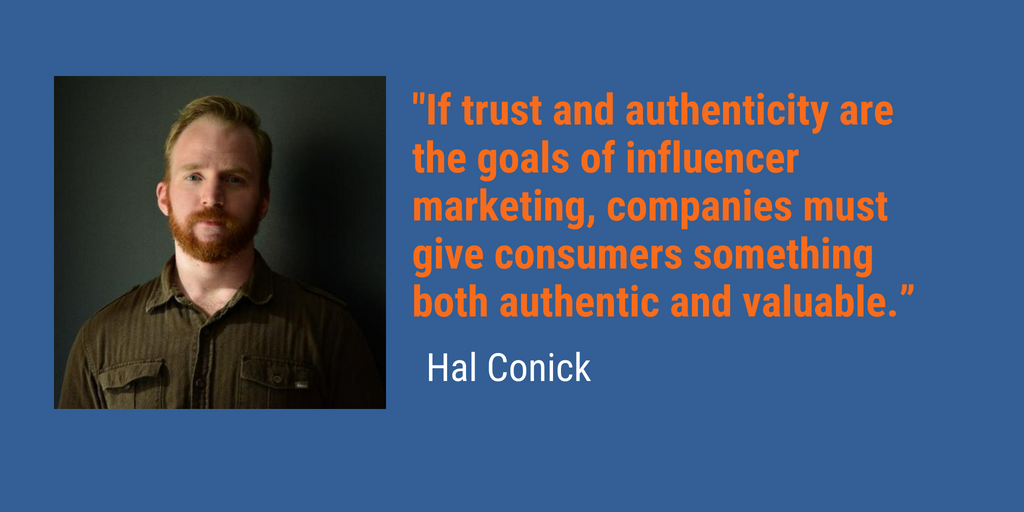
Conick notes these issues in his post, and points out that influencer campaigns need more than a hard sell. “If trust and authenticity are the goals of influencer marketing, companies must give consumers something both authentic and valuable,” he said.
For truly effective content marketing, move further up the Customer Journey
So how do you integrate influencers into your content marketing without cheapening the experience for everyone?
The approach is simple, effective, and true to the purpose of content marketing: Collaborate with influencers on content that solves customers’ problems.
Folks like Andy Crestodina have been beating this drum for years.

Another believer is Susan Moeller, Senior Marketing Manager for BuzzSumo. “We love collaborating with influencers on content. With so many topic areas crowded with content, collaborating with influencers breaks through to an audience more effectively than working alone,” she said.
In addition to exposing you to a new audience, Moeller added, “Collaboration also increases authority. When someone collaborates with you, they are endorsing you as a valuable source for information. Authority is one of the factors that contribute to content success, even in a crowded niche.”
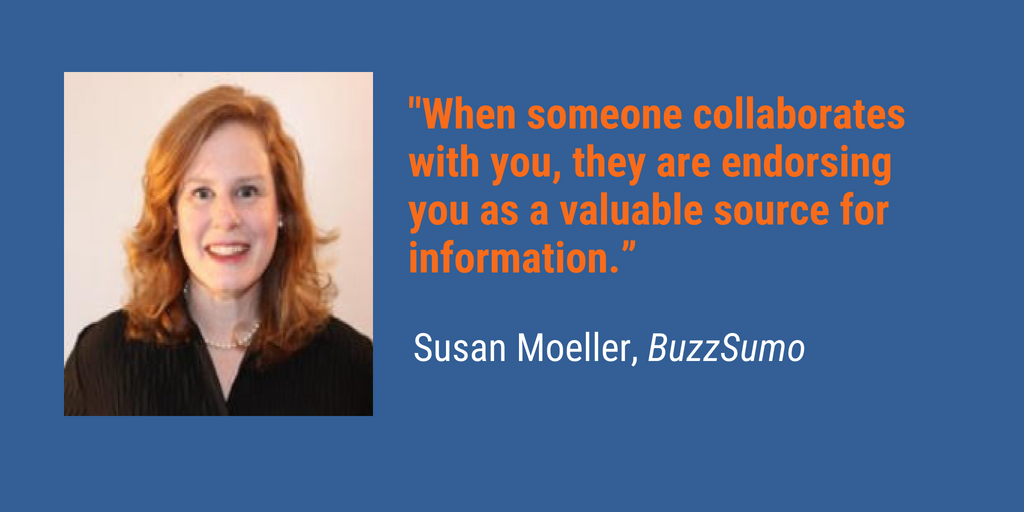
Collaborating with influencers works — in a very big way
When I first heard Andy Crestodina talk about collaborating with influencers, we switched our approach with our clients. This was back in 2016. Here’s a snapshot of traffic rates for a few of our clients when we made the switch.
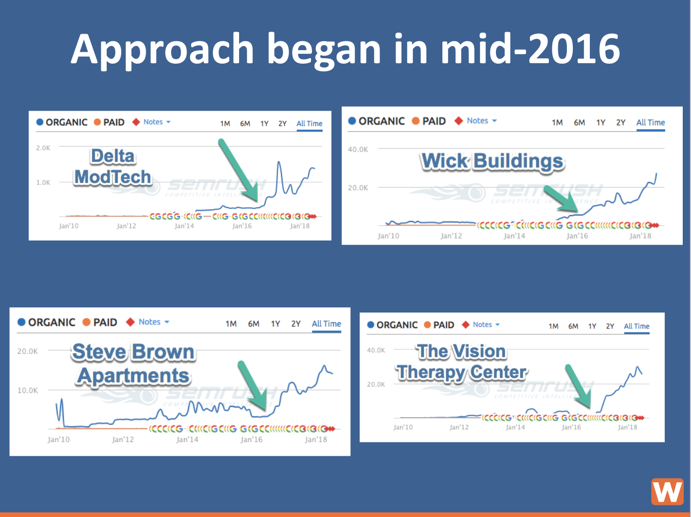
BuzzSumo has taken this approach to an art form. Susan Moeller describes how BuzzSumo used it to help their influencers (and themselves in the process).
“When we published our first annual content trends report in March 2018, we gave early access to the information to a group of influencers. This provided them with a valuable insider tip, and it provided us with a set of people who were interested and invested in sharing the content.
As part of this, we co-hosted a mini-event — lunch and discussion of the state of content marketing — alongside an industry conference. The group that gathered was on a peer level with each other, and many of them were speakers at the conference. So, they got to hear about the research before it was live, and chat with others about how to move forward.”
To date, the Content Trends Report has 2.3k social shares and 25 backlinks (add ours to the list). It also has been mentioned in at least 100 other blog posts and articles. The articles that mention the report have 12.7k social engagements and 438 backlinks.

Yes, this approach works, and it doesn’t require collaborating with Kim Kardashian (although that might help).
Small marketing departments can do it, too, by working with micro-influencers in your niche. Here are some criteria to help you prioritize which influencers to work with:
1. Knowledge
The post below, which we did for our client Delta ModTech, includes Tim Cook, who is very influential in the converting machine industry. The post ranks #1 for the keyword “lamination problems,” thanks to his insights.
This is proof that Delta ModTech is reaching its target audience early in the Customer Journey, when potential customers are looking for answers to one of this industry’s critical problems.

2. Connections
I mentioned Andy Crestodina earlier. In the process of building a big following, he’s also created a huge network of friends and collaborators. Look for influencers who collaborate with others, and have expansive networks as a result.

3. Followers / Fame
What I like about working with collaborators to solve problems is that they typically have loyal, well-earned fans and followers.
Ann Handley, for example, has built an amazing organization with MarketingProfs that helps countless marketing professionals. When I incorporated some of her insights into this post on the customer journey, her fans applauded her on social media. (I hope they were applauding my post, too!)
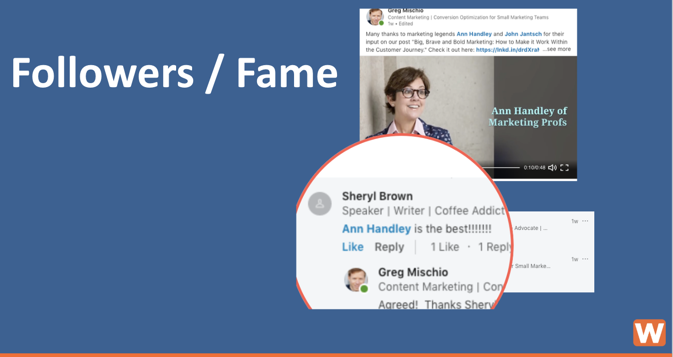
Finding the influencers
Your next step is finding influencers who meet these criteria. You can use rudimentary tactics to track down people, including:
- Run a Google search on the content topic you are addressing
- Search social media streams using hashtags or keywords for the topic
- Reach out to partners and allies
You can also use tools like BuzzSumo and Mention to dig deeper, and really unearth some amazing insights.
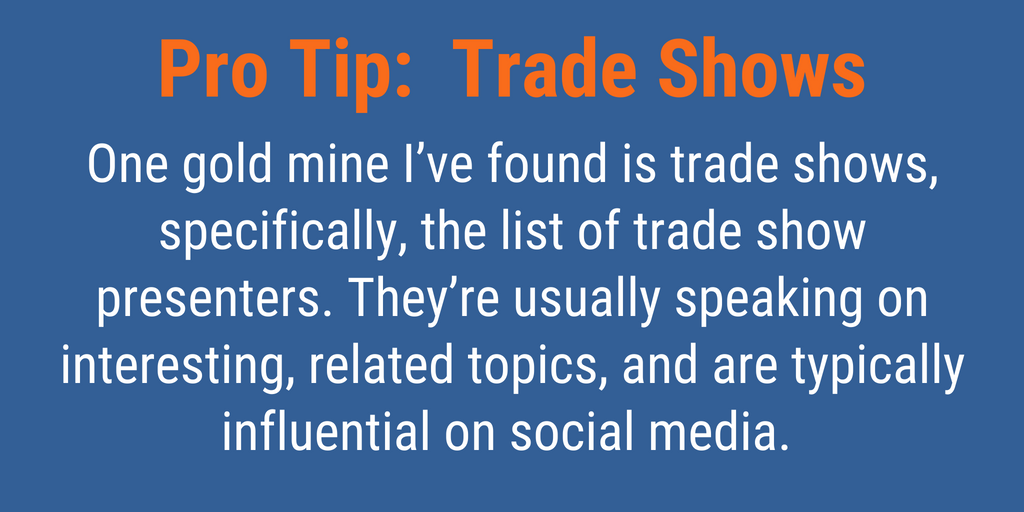
Influencer rules of engagement
Now that you’ve scoped out the influencer, it’s time to engage. These are my rules of engagement:
Rule #1: Meet initially face-to-face (or face-to-screen)
It’s really hard to forge a relationship just via email and tweets. The ideal method is to meet the influencer face-to-face or over a Skype call. You need to make real contact.
I like to do a short audio interview with an influencer as part of the content. It’s a great way to make contact with someone across the country.
Rule #2: Make the influencer your mentor
You’re not just fishing for a quote here, or access to their social network. Learn something from your influencer.
I always make the person my unofficial mentor. I’ve gleaned a lot from Gini Dietrich of Spin Sucks, pictured below. Beyond her comments on my blog, I’ve read a ton of her posts and talked with her about building an agency. She’s become one of my many unofficial mentors.

Rule #3: Always be a “go-giver”
This is Bob Burg, who we featured in our post about how giving — instead of asking for favors — is the true goal of content marketing. So give of yourself. What can you offer these influencers that will help their cause more than yours?

Drumroll…the top 10 ways to collaborate with influencers
We work with small marketing departments: one- to three-person teams who see the need for content marketing but don’t have the time to do it themselves. For these marketers, the following semi-guerilla tactics can work because they’re effective when reaching out to influencers of all sizes. (I haven’t tried Kim Kardashian yet.)
1. Micro-mentions
This is an easy way to collaborate on content. Simple mentions on social media, in which you’re sharing a picture and tagging an influencer, gets your face and your profile in front of other influencers.
Here’s an example from an event we sponsor here in Madison. I put together of a photo collage of attendees, then tag them in a LinkedIn post.
2. Promote their services
One of our clients is Steve Brown Apartments in Madison. On SBA’s blog, we spotlight local businesses that have offerings ideal for SBA’s renters. The businesses, in exchange for the publicity, give away coupons or discounts in a “Monthly Blog Bonus.”
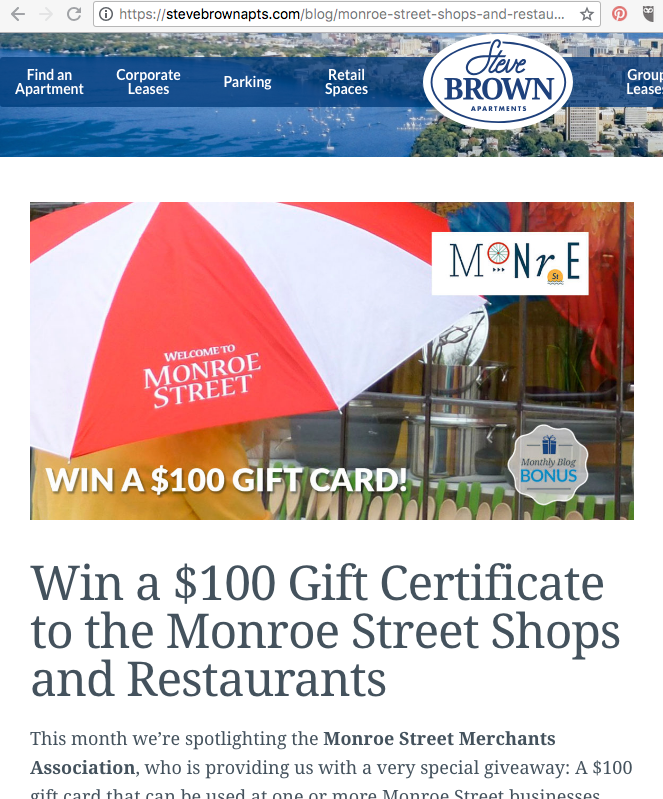
All these get good, consistent engagement as they’re shared through the social networks of the collaborators. (Metrics from BuzzSumo!)
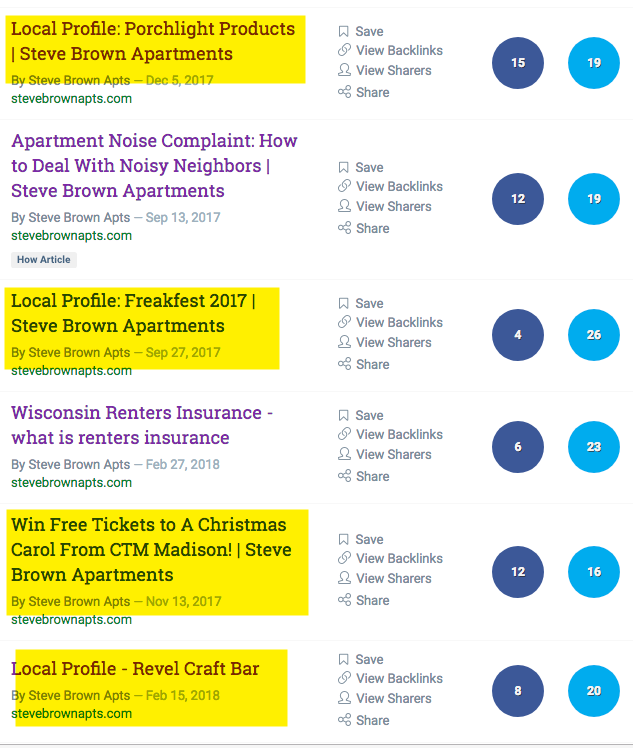
You can also do this on a personal level. Here’s me promoting the services of a good friend, Heidi Meyer, who is a branding and innovation consultant.
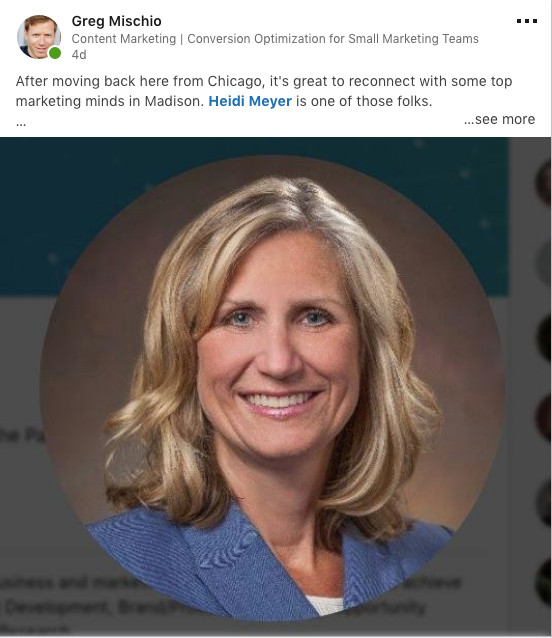
3. Share your email list
Introduce an influencer to your email list subscribers, and that influencer will do the same for you. Here’s Sarah Best promoting me speaking at one of her own presentations — giving me exposure to her followers. Thanks, Sarah!

4. Collaborate on content one-on-one
Ok, now we’re moving into the areas that really move the needle. This is ideal for working with micro-influencers. We featured great one-on-one interviews with companies that collaborate with our client, Delta ModTech. Great content, and great exposure for all involved.

5. Collaborate on content — the expert roundup
You’ve undoubtedly heard of and seen this done many times. Nothing beats an expert roundup for collaboration and exposure.
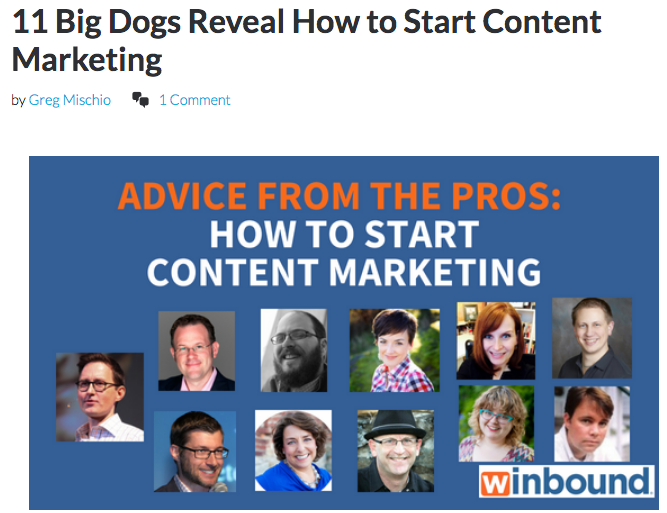
Check out the comparison between this expert roundup and a different type of post we recently ran. The roundup generated significantly more traffic within the first 30 days.
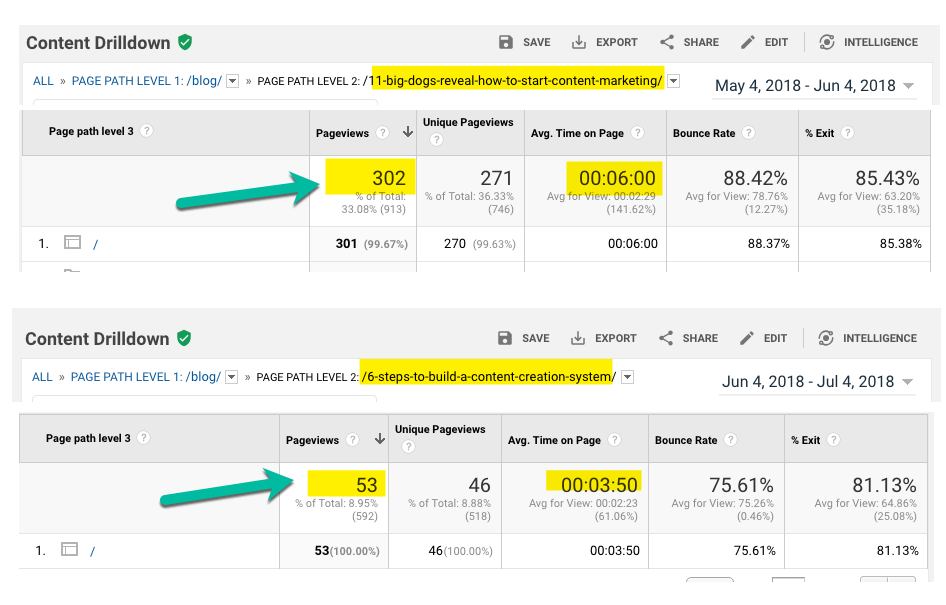
WORD OF CAUTION: Maybe it’s just me, but I find myself avoiding the gi-normous roundups that feature 100 experts. They’re overwhelming, and worse, many of them lack a narrative that ties the segments together.
In our roundup, “How to Get Started on Content Marketing,” we weave quotes and stories into a narrative. You want people to read the dang thing, right?
6. Return to influencers to update old content
This is one of my faves. After you publish a roundup, return to it a year down the line with new content. For our client, LaManna Alliance, we collaborated with different influencers on posts throughout the year, then asked each to contribute an industry prediction for the next year.
A year after that, we went to the same post and updated it with new content. The result is that our client ranks high for the critical term, “Printing Industry,” which helps drive a ton of traffic.

7. Access their network of friends (but don’t exploit the privilege)
It doesn’t hurt if your influencers are connected. Ask them if you can use their names to connect to these people yourself.
I mentioned Andy Crestodina when I reached out to Barry Feldman for a quote, and Barry responded. (Naturally, I asked Andy first.) Don’t abuse this privilege, but don’t shy away from it when there’s a win-win for all involved.
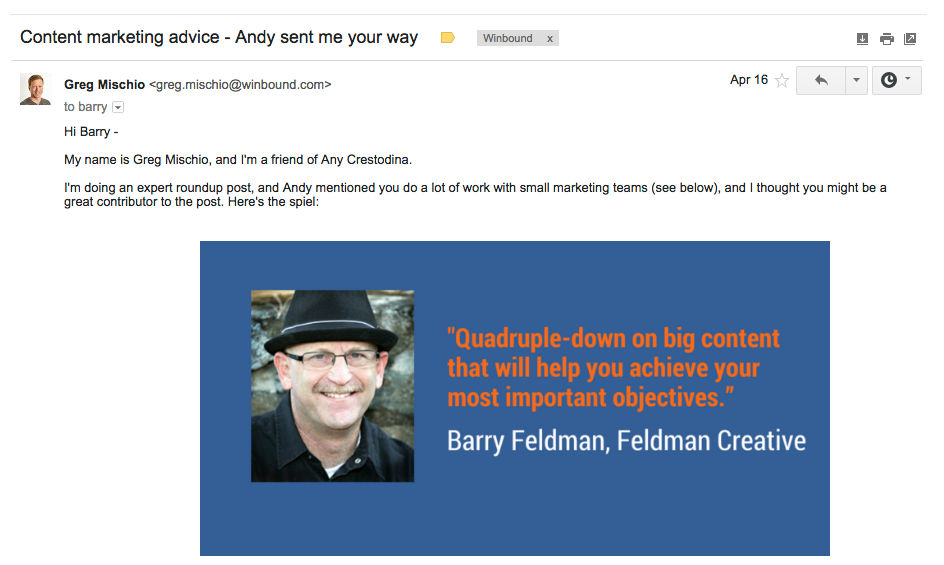
8. Ask them to be a traditional referral source
When you meet influencers, be sure to make them aware of what you do and how you help people. You’d be surprised how many of them will pass along business leads to you, once they’re aware of your services.
We want to refer to people we trust, right? Many of the folks mentioned in this post have referred clients our way. And we’ve returned the favor.
9. Ask them to be a digital referral source (link, link)
It’s nice when influencers share your content on social. But for search engine optimization, having them link to your content from their site is invaluable.
I interviewed Corbin Ball for a post on trade show marketing. He gave us exceptional insights, and then when I followed up with a request for a link to the content from his website, he gave us that, too. Thanks, Corbin!
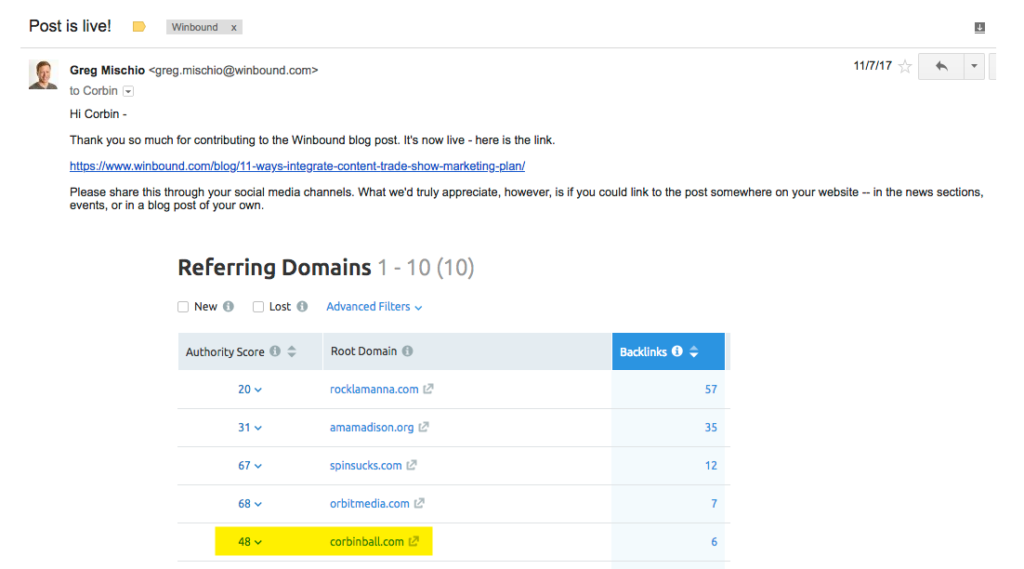
10. Become an influencer yourself
This is my favorite. In the process of following rules 1 – 9, you’ll find your own influencer star shining a little brighter. And influencers attract other influencers. To make that happen, you should:
- Create content in which you collaborate with influencers
- Maintain top-of-mind awareness on social media
- Create and participate in off-line events
Friends, this isn’t easy stuff. It’s hard work to produce the content and make the contacts.
But it’s a lot of fun, too, and it REALLY gets your clients and their organizations jazzed. Most importantly, it generates big-time results for the bottom line. And nothing creates influence like money in the pocket, right?
Find out how your content and conversion ranks with our interactive version of the Content Scorecard you can fill in yourself – no email required for download.

